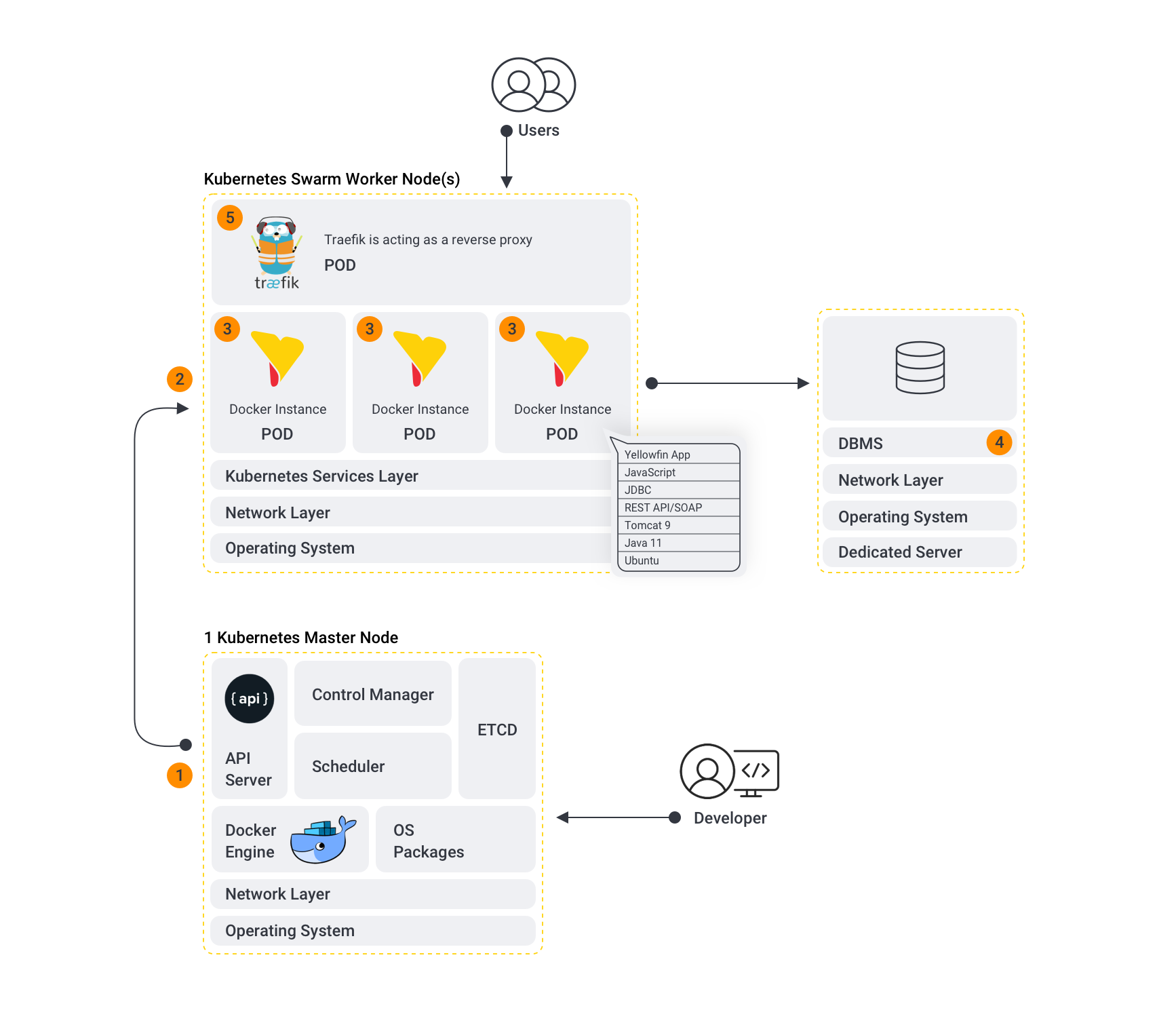Overview
The following diagram shows a typical Yellowfin cluster running in a Kubernetes environment, which typically has the most components of our Kubernetes deployment examples. Note that we’ve used Traefik in our architecture, but any container-aware proxy that makes use of sticky sessions could be used in its place.
Breaking down the above diagram:
- Kubernetes Master node:
- Kubernetes Worker Node(s): Yellowfin containers sit within the worker node or nodes of a Docker Swarm environment.
- The Yellowfin component: Yellowfin pods that form the Yellowfin cluster. These pods may be placed on multiple Kubernetes worker nodes depending on available resources in the Kubernetes cluster. Depending on the Yellowfin deployment type, the Kubernetes environment will have one or more Yellowfin instances running, with those instances connecting to either the same database (for a clustered Yellowfin deployment) or different database (discrete instance deployment).
- DBMS
- Traefik: Traefik is a container-aware reverse proxy that runs Kubernetes environment and handles the load balancing and sticky sessions for the Yellowfin instances. We go into more detail about Traefik and Kubernetes later on (link).
For single instance deployments of Yellowfin on Kubernetes, there will only be a single Yellowfin pod present.
Other scenarios
For multiple discrete Yellowfin instances on Docker Swarm, deploying Traefik is optional. If it is deployed in this situation, it can route requests to the discrete Yellowfin deployments, instead of exposing ports on the Docker Swarm cluster that route directly to the Yellowfin instances. Alternatively, you can avoid Traefik if you have a container-aware proxy that supports sticky sessions (such as NGINX).
In a multiple discrete Yellowfin instances on Kubernetes, each Yellowfin instance will be communicating with a different Yellowfin repository database.
Note that due to the nature of the Kubernetes architecture, it’s not logically feasible to set up a Yellowfin single instance or clustered deployment on a single Docker server.
If you’re using the Yellowfin All-In-One image, it does not require the external Yellowfin repository database, as the image comes embedded with its own.
